41 immune system worksheet pdf
Teacher's Guide: Immune System (Grades 6 to 8) Subject: The activities in this Teacher's Guide will help your students learn about how the immune system protects them from germs and illness. Keywords: immune system, germ, germs, illness, illnesses, ill, sick, flu, immunity, influenza, cold, colds, virus, viruses, immune Created Date
Lymphatic/Immune System Combining Forms Worksheet . Combining Form Meaning immun/o lymph/o lymphaden/o splen/o thym/o tox/o . Lymphatic/Immune System Prefixes . Prefix Meaning . ana- inter- Lymphatic/Immune System Abbreviations . Abbreviation Meaning . AIDS CD4 + cell CD8 + cell CMV Crypto ELISA G-CSF GM-CSF HAART ...
the immune system and confer immunity to the injected animal. In some cases molecules produce by the body can be used in that same body. If such molecules result in destruction of a tumor, that is a good thing. But sometime these molecules can result in an autoimmune disease in which the

Immune system worksheet pdf
Lesson 1: Organs and Tissues of the Immune System. This lesson familiarizes students with the anatomy of the immune system. By sharing symptoms of common illnesses they have experienced, students will begin to feel the relevance of the program. Students create a T-chart of locations and functions of organs and tissues of the immune system and ...
the immune system is a functional system rather than a system with discrete organs ! parts of many organs contribute to body defense almost all organs in body play some role in immunity ! dispersed chemicals, cells and tissues! dispersal and transport via circulatory and
understanding of the types of cells in the human immune system and the cellular ... -As the students complete the worksheets, as available in the handout ...55 pages
Immune system worksheet pdf.
The Immune System and Disease Section 40-1 Infectious Disease(pages 1029-1033) This section describes the causes of disease and explains how infectious diseases are transmitted. Introduction (page 1029) 1. Any change, other than an injury, that disrupts the normal functions of the body, is a(an) . 2. What are three ways diseases can come about?
Immune Response: True or False. Write true if the statement is true or false if the statement is false. _____ 1. The third line of defense is nonspecific. _____ 2. The lymphatic system is not part of the immune system. _____ 3. The lymphatic system transports fatty acids out of the bloodstream. _____ 4. The lymphatic system produces white blood ...
A. Immune System: functional system NOT an organ system; recognizes specific foreign substances and acts to immobilize, neutralize, or destroy them B. Immunity 1. Direct: cell attack 2. Indirect: chemicals and antibodies 3. Together result in highly specific resistance to disease C. Nonspecific (Innate) Defense System 1. Immediate response 2.
There are many types of immune system cells. The cell that produces antibodies is the. ______. a. macrophage b. phagocyte c. T lymphocyte d ...4 pages
"Immune System" and choose an immune system disorder to report on. Use this handout to gather facts from the article and other sources (you can search for each disorder at TeensHealth.org). Then give a brief report to the students. Extension: Washing your hands often (1) is the best way to avoid infections and help keep your immune system ...
Results 1 - 24 of 84 — Browse immune system worksheets resources on Teachers Pay Teachers, ... PDF. The Immune System and Infectious Diseases Worksheet.
site of infection the innate system will initiate repair and healing. Importantly, activation of the innate system is also essential for the triggering of adaptive immune responses 1.2.3.2 Recognition in Adaptive Immunity: Antigen Receptors The key components of the adaptive immune system are the lymphocytes.
The adaptive immune system generates immunological memory - exposure to an infectious agent produces an immune response that can persist, and protect the host in a subsequent exposure 6 . The major types of pathogens confronting the immune system, and some of the diseases they cause 7 .
IMMUNE SYSTEM The body's defense against: • disease causing organisms or infectious agents • malfunctioning cells or abnormal body cells as cancer • foreign cells or particles Basic Immunity • Depends on the ability of the immune system to distinguish between self and non-self molecules • Self ...
immune system - Tissues, cells and organs that detect and fight infections caused by germs. immunity - When your immune system knows what a certain germ looks like, they can get rid of it without you getting sick. You are immune to that germ. infection- When a germ enters our bodies and makes us sick. macrophage - see white blood cells.
LYMPH SYSTEM WORKSHEET Word Bank: circulatory, elimination, infectious agents, lymph, nodes, vessels 1. The lymphatic system is a vast network of _____ running through the body. 2. It has a number of functions, including _____ of water that congests tissues. 3.
HIV attacks some of the most important cells of the immune system, the helper T cells (also known as T4 cells or CD4 positive T cells). Because the immune system itself is attacked, the body is unable to rid itself of the virus. 6. How is HIV transmitted from one person to another? HIV is transmitted through either semen or blood. 7.
31.2 Immune System The immune system consists of organs, cells, and molecules that fight infections. 31.3 Immune Responses The immune system has many responses to pathogens and foreign cells. 31.4 Immunity and Technology Living in a clean environment and building immunity help keep a person healthy. 31.5 Overreactions of the Immune System
Immune System (and Lymphatic) Use the worksheet above to complete the notes and practice problems included in the worksheet using the series of videos and animations on how the immune system works. Follow the links in order. The videos and links were selected to help you understand how immune system fights pathogens.
The Immune System.ƒ 10/27/03 11:28 AM Page 1 Introduction T he immune system is a network of cells, tissues*, and organs that work together to defend the body against attacks by "foreign" invaders. These are primarily microbes (germs)—tiny, infection-causing organisms such as bacteria, viruses, parasites, and fungi. Because the human
the immune system shuts down. the third line of defense of the immune system is activated within seconds. the first line of defense of the immune system has succeeded. the second line of defense of the immune system is activated. A chemical that is produced as a part of the inflammatory response is … flagella. cilia. monoamine. histamine.
Howard Hughes Medical Institute. 2007 Holiday Lectures on Science. Cells of the Immune System—Student Worksheet. About This Worksheet.
14. Complete the Venn diagram that compares the primary immune response to the secondary immune response. Primary immune response Secondary immune response Your initial immune response to an invading pathogen. It takes longer for your immune system to mount a defense because it has not been exposed to the pathogen before. Both are responses by ...
Immune system questions. Google Classroom Facebook Twitter. Email. Immune system. Practice: Immune system questions. This is the currently selected item. Innate immunity. Adaptive immunity. Role of phagocytes in innate or nonspecific immunity. Types of immune responses: Innate and adaptive, humoral vs. cell-mediated.
• Immune system fails to function at full effectiveness a) Problems with embryological development of immune system (e.g., SCID) b) Infection with virus that depresses immune function (e.g., HIV) c) Exposure to immunosuppressive agents (e.g., radiation / drugs) 3) Allergies (common) • Inappropriate / excessive immune responses to antigens
Inside-Out Anatomy: The Immune System. Share this worksheet. Looking for a way to learn about your insides without having to sit in front of an x-ray? Look no further than our Inside-Out Anatomy series, which lets you see your body in a whole new light. With this page, you can learn about the immune system, which keeps us healthy and well.
Our body's immune system protects us from germs like viruses, bacteria, fungal infections and parasites. Our immune system is made up of special organs, vessels and many different types of unique cells that each play a very important role in keeping us healthy. We call the cells of the immune system white blood cells.
the Immune System January 2010 * * * * * * Refer to the teacher guide at above link before playing. Requires printing out pages preferably in color and set up beforehand. * * * * * * * * * Allogeneic: taken from different individuals of the same species. Two or more individuals are said to be allogeneic to one another when the genes at one or ...
unit two. Human Body Detectives Go to School Elementary Curriculum. The Immune System. HBD, a trip through the immune system activities and worksheets ...26 pages
•Immune system—not an organ system, but a cell population that inhabits all organs and defends the body from agents of disease -Especially concentrated in the true organ system: lymphatic system •Network of organs and vein-like vessels that recover fluid •Inspect it for disease agents •Activate immune responses
immune systems defend us against germs and microorganisms daily to keep us ... KidsHealth.org/classroom/9to12/body/systems/immune_handout1.pdf.8 pages
3. w/immune - prevents pathogens from entering Lymphatic 1. stores and carries WBC's that fight disease 2. collects excess fluid and returns it to blood (2nd circulatory system-reaches places other one can't - between cells) Lymph (liquid part of blood - plasma, when it's in lymph vessels) Lymph Vessels Lymph Nodes Contain WBCs
The body's defence system/immune system ... Support materials for a number of the research topics are provided in Appendix A - Worksheets & Marking.62 pages
The Immune System-CRCT Coach Book pgs. 81-84: File Size: 611 kb: File Type: pdf
Immune System Worksheet: causes infectious disease: protein that triggers an immune response 2.: provides resources to grow infectious disease 3. a. Viruses have and b. Give 2 reasons why viruses are not alive: 4. How does each these of systems contribute to defending against disease? a. skeletal system: b. integumentary system: c. digestive ...
pdf, 117.65 KB pdf, 120.5 KB This worksheet covers the physical and chemical barriers we have against pathogens. And also how the immune system works, covering the roles of phagocytosis, antibodies and antitoxins.









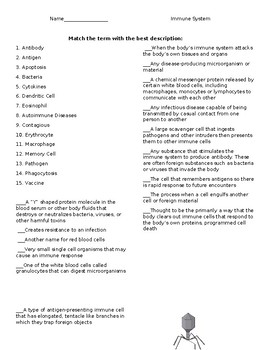







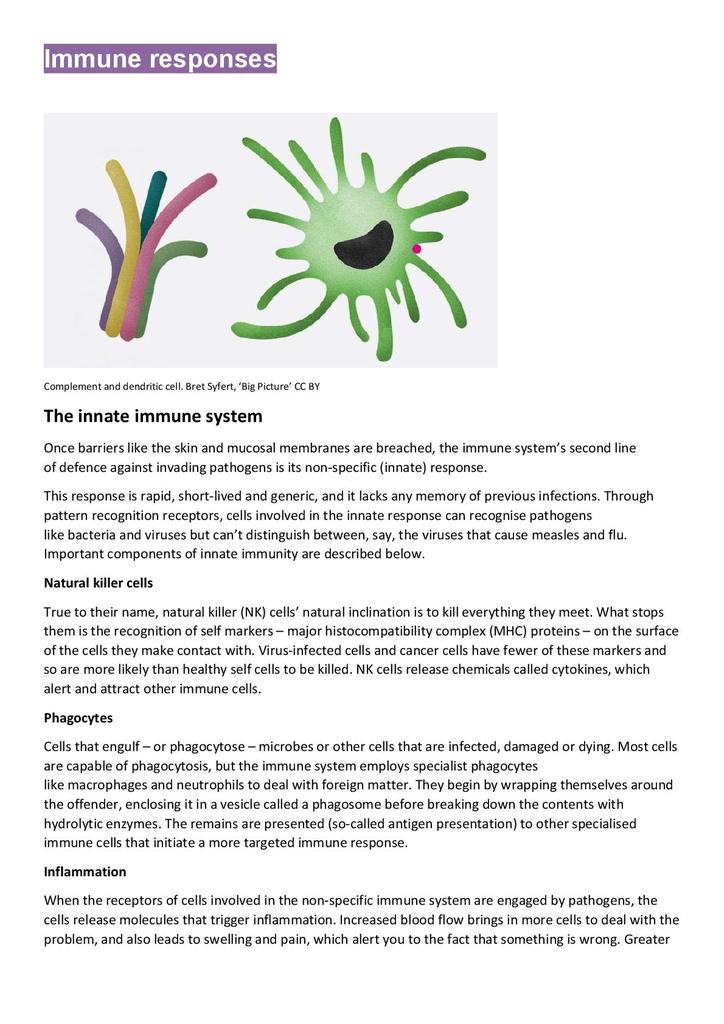



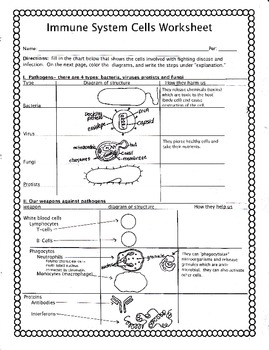



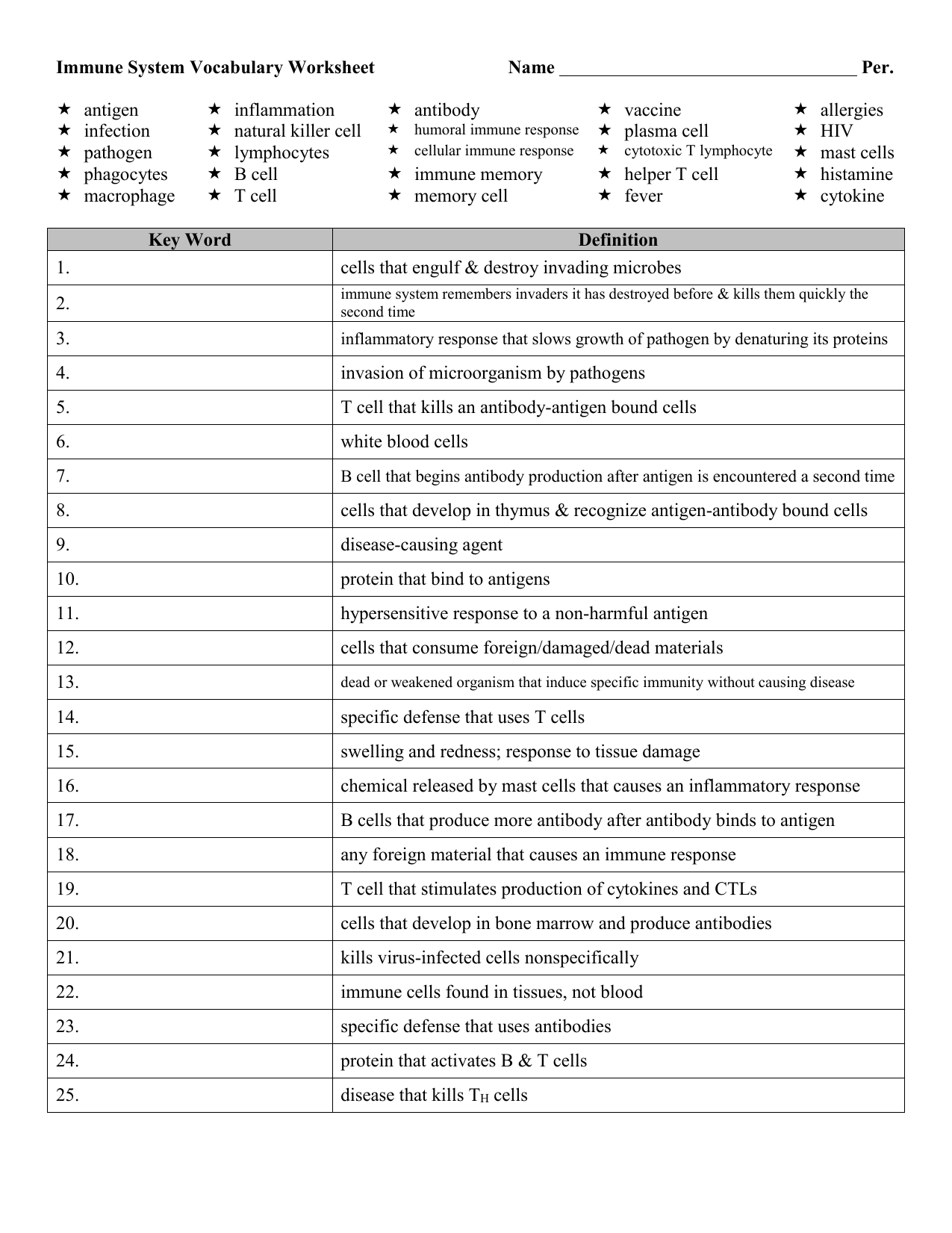

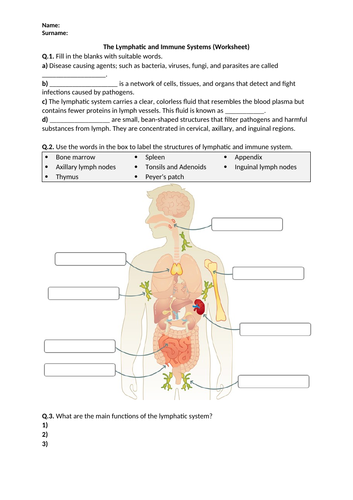





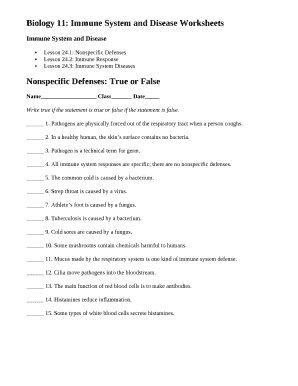
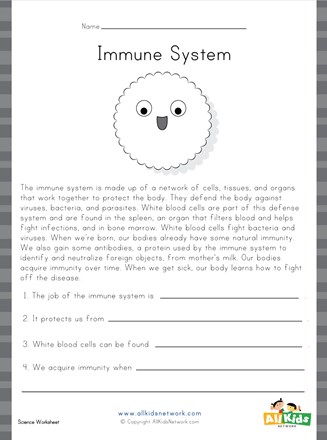
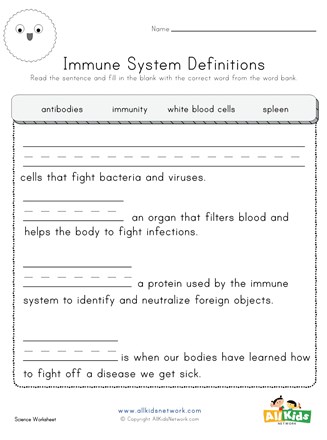
0 Response to "41 immune system worksheet pdf"
Post a Comment